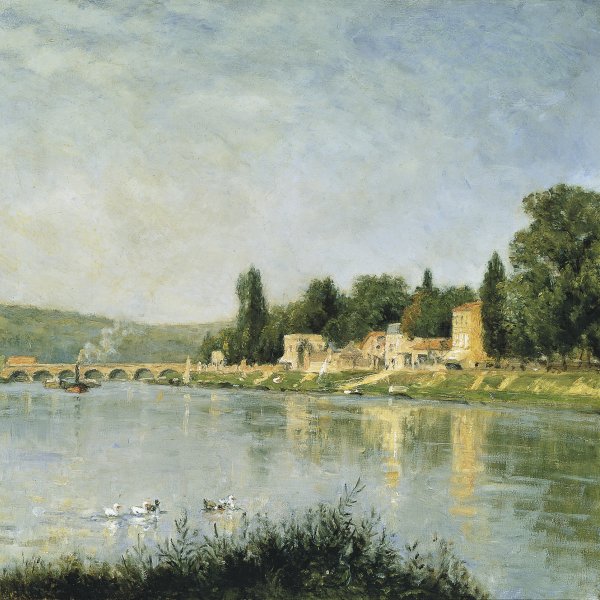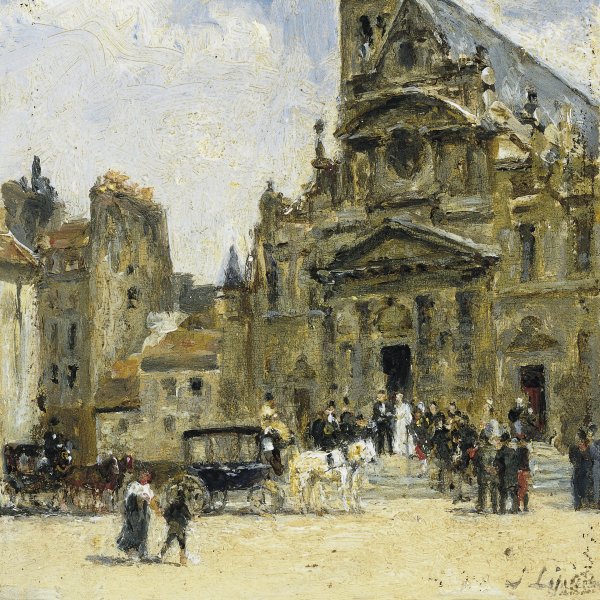Stanislas Lépine
Caen, 1835-París, 1892
Born in Caen in 1836, Victor Edouard Stanislas Lépine began his artistic career following the manner of the ship-painter Johan Barthold Jongkind and specialising in the rendering of nautical views such as Sailing Boats in Caen Harbour. In 1855 the painter moved to Paris and in 1859 he made his début at the Salon, exhibiting Port of Caen, Moonlight Effect. Stanislas Lépine specialised in painting picturesque urban views, recurrently choosing to feature the River Seine and the old streets of Paris. In 1860 Lépine undertook a more professional apprenticeship under the guidance of Jean Baptiste-Camille Corot and during this period met the artist Henri Fantin-Latour (1836-1904). The friendship between the two artists is documented by the numerous instances in which Fantin-Latour provided Stanislas with financial help. In Corot's studio Lépine developed a personal style that is halfway between the traditional pastoral spirit, characteristic of his master's compositions, and the atmospheric landscapes typical of the impressionists, as epitomised by works such as the 1878 Montmartre, Rue Saint Vincent and the 1880 Le Pont de Mondo (both in the Musée d'Orsay). Although Lépine never came to equal the popularity of his contemporary colleagues, he was invited to participate to the first Impressionist exhibition in 1874 where he exhibited Banks of the Seine and regularly participated in the Salon during his lifetime (Grove Dictionary of Art). Stanislas Lépine's works were appreciated for both their refined effects of light and for their contemplative moods and are considered by contemporary critics as precursory of the Impressionist movement.
Dominique Lora
Dominique Lora






